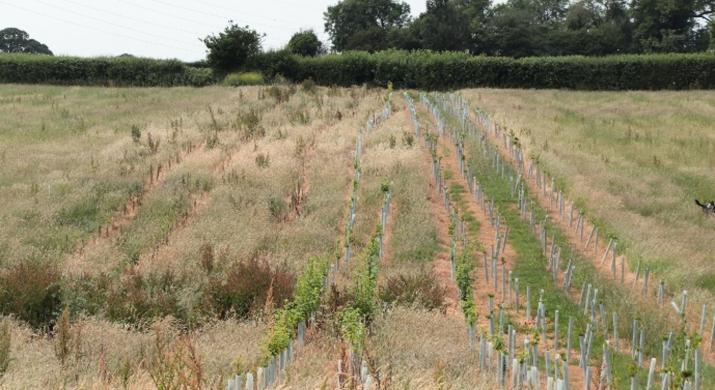
On the 15th June 2023, Forest Research reported that total new tree planting in Wales in 2022/23 covered 1190 hectares1, well below the 5000 ha needed per year to meet the Welsh Government’s target to plant 43,000 ha of new woodland by 2023.2 It was therefore fitting that the 15th June 2023 was the first day of the annual ialeUK postgraduate workshop, which this year was title “Woodland Creation and Tree Planting in Wales”.
Webinar: Methods of woodland creation and monitoring the success
Testing a new approach to delivering workshops to our community, the 2023 workshop was a two-day field preceded by in-depth webinar hosted earlier in the week, where we were joined by three experts in the field of habitat creation. Our first speaker, Sara King, rewilding manager at Rewilding Britain, provided an overview of the merits of a rewilding approach to woodland creation. Lindsay Maskell, plant ecologist at the UK Centre for Ecology and Hydrology, then talked through the Environment and Rural Affairs Monitoring Programme (ERAMMP). Finally, Ben Goh, commercial manager at Maelor Forest Nurseries, gave insight into addressing the practical challenges of providing the quantity of trees required to meet tree planting targets. The webinar is now available to watch on our Youtube channel: https://www.youtube.com/@ialeuk151. Our Landscape Connections team also hosted a webinar on Nature Recovery Networks in Wales earlier in June 2023, which is also available on our Youtube channel: Landscape Connections webinar - June 2023 - Jim Latham & Liz Hancocks, Natural Resources Wales
Day one: community building & engagement
Later in the week, early career researchers were taken on a tour of woodland creation and tree planting projects in South Wales. After meeting at Newport train station, the group ascended into the mountains of the Bannau Brycheiniog National Park (formerly known as the Brecon Beacons), to our first stop, Bryn Arw, which translates from Welsh as “rough hill”. Here we were met by Robert Penn, former journalist and co-founder of charity, Stump Up for Trees.3 Two nights before our field trip I had received an email from Robert, explaining that a journalist from BBC Wales was also interested in hearing about Stump, and he had therefore invited the journalist to join our tour to create a piece for a news segment. Our group, the BBC Wales journalist, Robert and Robert's dog embarked on a climb up the rough hill, walking through fields of cows, burning in the hot June sun.
Stump Up for Trees’ headline ambition is “to plant one million trees in the Bannau Brycheiniog National Park”. Robert explained that the charity understands that in reality, woodland creation success cannot be determined by tree planting numbers alone. Standing on top of the hill, the clear day facilitated views of the surrounding hills. Pointing out the band of bracken that runs around each, Robert explained that there is a theory that the bracken grows where woodland once did before it was cleared thousands of years ago. Whilst the foresters among you will know, bracken creates a battle for woodland creation, but to Stump Up for Trees it also indicates land with a potential for afforestation.
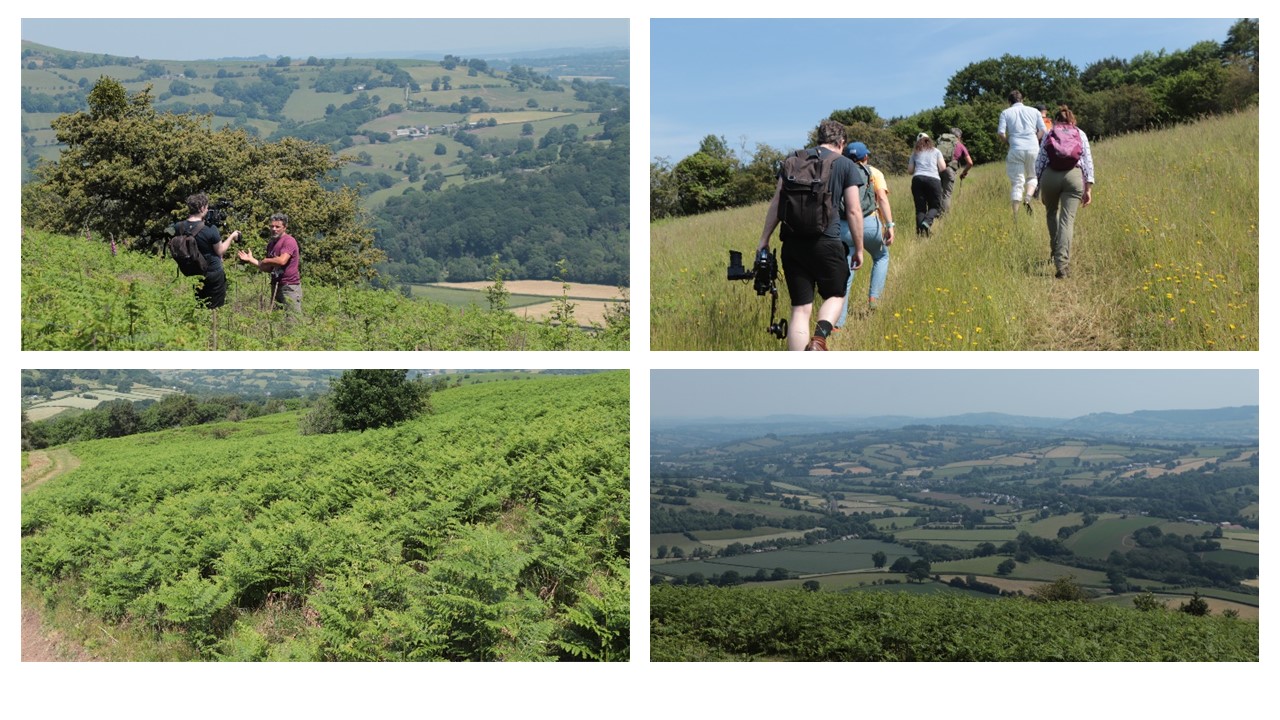
When we reached the charity’s pilot tree planting project on the other side of the hill, we bumped into Keith Powell, former vet, hill farmer and founder of the charity, hard at work. The planted trees were planted two years ago and included a mixture of broadleaved species, some grown in the charity’s own nursery, and some sourced from other organisations such as the Woodland Trust. Robert explained that that Stump had undertaken a lengthy consultation process before commencing the project to foster community support. To avoid the use of plastic tree guards to protect young trees from grazing livestock and deer, Stump installed a fence before planting its first trees two years ago. Fence installation is subject to many restrictions on common land, but through working with the commoners, Stump gained approval to make this move. They were also receptive to input from charities such as the Butterfly Conservation Trust and Amphibian and Reptile Trust, to design woodlands that support a rich variety of species. Whilst Robert filmed an interview for BBC Wales, Keith explained to us the practical challenges of planting trees at the top of a large hill and noted that the project had required a lot of volunteer time.
The next stop was to see a National Heritage Lottery Fund-supported community tree planting project, Coed Hen Ffordd, in Talgarth with Jed Needs from community interest company, the Green Valleys.4 The walk to the site from the carpark took us through a beautiful ancient woodland where Jed highlighted the desire of the Green Valley’s project to expand the existing woodland. The project had encountered several challenges to get off the ground, including difficulty in acquiring the land as another buyer was able to offer a more competitive price for the original piece of land they had selected. The site selection was important to get right as one goal of the planting was to benefit the existing woodland habitat in the area, and the site the company finally managed to acquire was a field between two strips of fragmented woodland.
Jed also teaches at the Black Mountains College5 (BMC) and took us to visit a hedge planting project conducted by the students. This part of the visit triggered a conversation around the difficulty in retaining skills in rural communities. The BMC is training the next generation in sustainable land management and nature conservation skills, but students encounter difficulties in finding opportunities and affordable housing in the area to stay in the community after completing their courses.
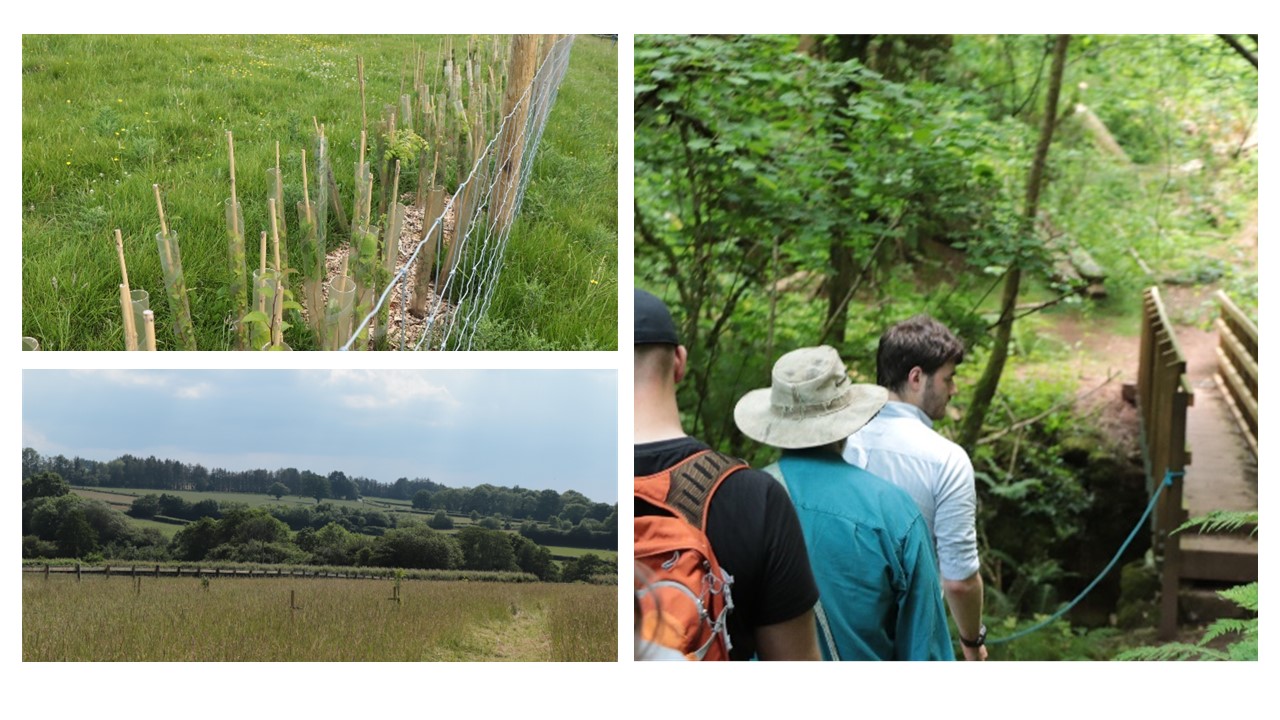
Day two: Ecosystem services & Agroforestry
After spending the night in Merthyr Tydfil, our second day began with a spectacular drive through the national park, all the way to Neath. Here we visited Brynau Farm6 with Chris Matts, site manager for the Woodland Trust in South Wales. Similarly to Coed Hen Ffordd, the woodland creation at Brynau Farm aims to expand the existing ancient woodland in the surrounding area but, as a Woodland Trust project, Brynau Farm is attempting this at a bigger scale. Acquiring the land for this project had also been a challenge for the Woodland Trust and turned out to be a lengthy process, with parcels of the now afforested land being bought at different points in time when it had become possible.
Brynau Farm is situated above the town of Neath and one goal of the project is to reduce runoff and therefore flooding in the town, a frequent event in winter. Among the fields of newly planted trees, the project had also installed leaky barriers - natural flood management measures - in the ditches where water usually flows, although at the time of our visit the ground was cracked and dry. Summer droughts had been noted as a challenge for all three of the projects we had visited so far, with manually watering large areas of land, particularly those situated on hillsides, proving practically difficult.
Part of the discussions we had with Chris centred around the trade-off of woodland creation with providing land for agriculture. Chris noted that woodland creation projects in South West Wales are less common due to the higher value of agricultural land. The projects we had visited during this workshop mostly had low agricultural value. Guidance on the Sustainable Farming Scheme, which will be available in Wales in 2025 and support activities including tree planting, has noted the importance of the “right tree, right place” concept and that new guidance will not override policies which protect land classified as “Best and Most Versatile land”, the most agriculturally productive lands.7
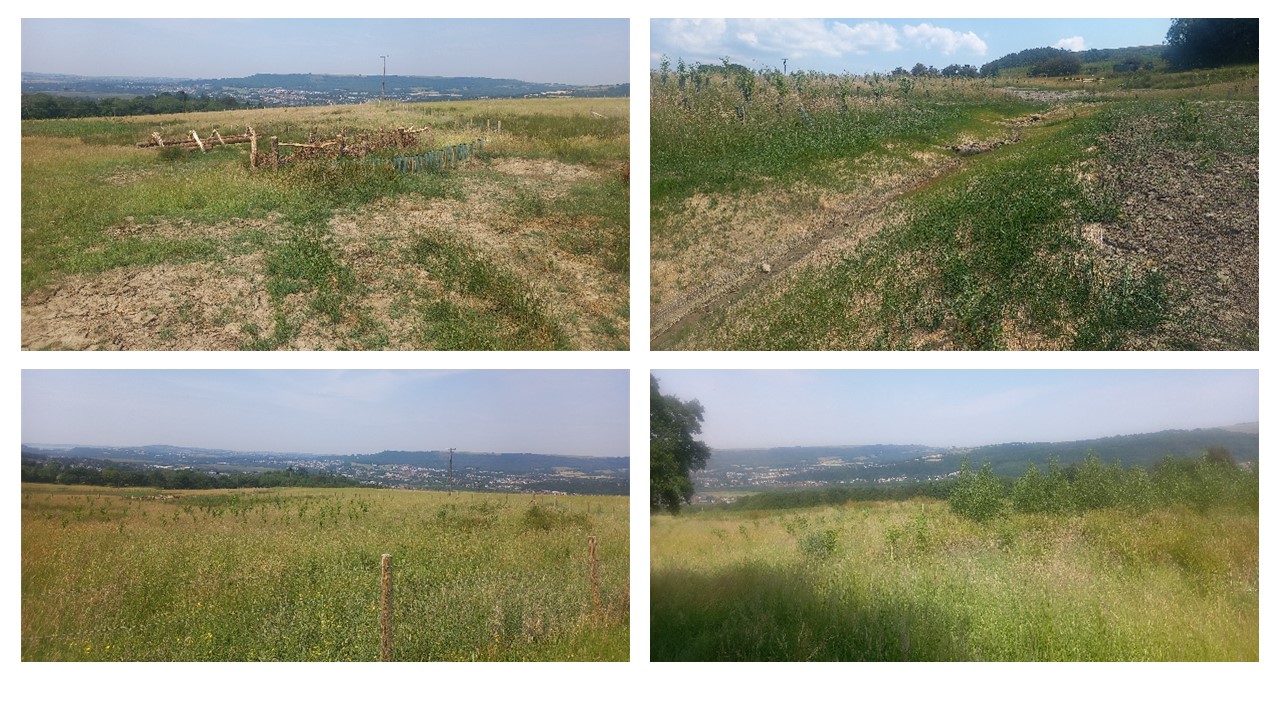
Given the importance of addressing the trade-off between tree planting and agricultural production, our trip would not have been complete without visiting a system testing whether this can be achieved simultaneously. Our final visit was Goldsland Farm, a working dairy farm, owned by National Farmers Union Cymru deputy chair, Abi Reader. Abi has set aside one of her fields to test the concept of growing trees on her farm that can be used to reduce emissions produced elsewhere on her farm. Due to her lack of expertise and interest in growing trees, Abi had called in consultant, Richard Edwards, to help design the trial.
Together, they developed an innovative project to grow trees that regrow from their roots so they can be harvested regularly to produce charcoal, which could then be applied to slurry to reduce ammonia emissions from the farm’s dairy herd. Abi and Richard hope that the pilot will provide proof-of-concept to give other farmers the confidence to adopt similar circular farming practices. Whilst standing in the field admiring the newly planted trees, the group also noticed a very impressive hedgerow behind us. The hedgerow contained a very old but very healthy elm, and this sparked a discussion on the value of hedges, a feature unique to the UK, in supporting their own biodiversity and connecting the new woodlands being created now.
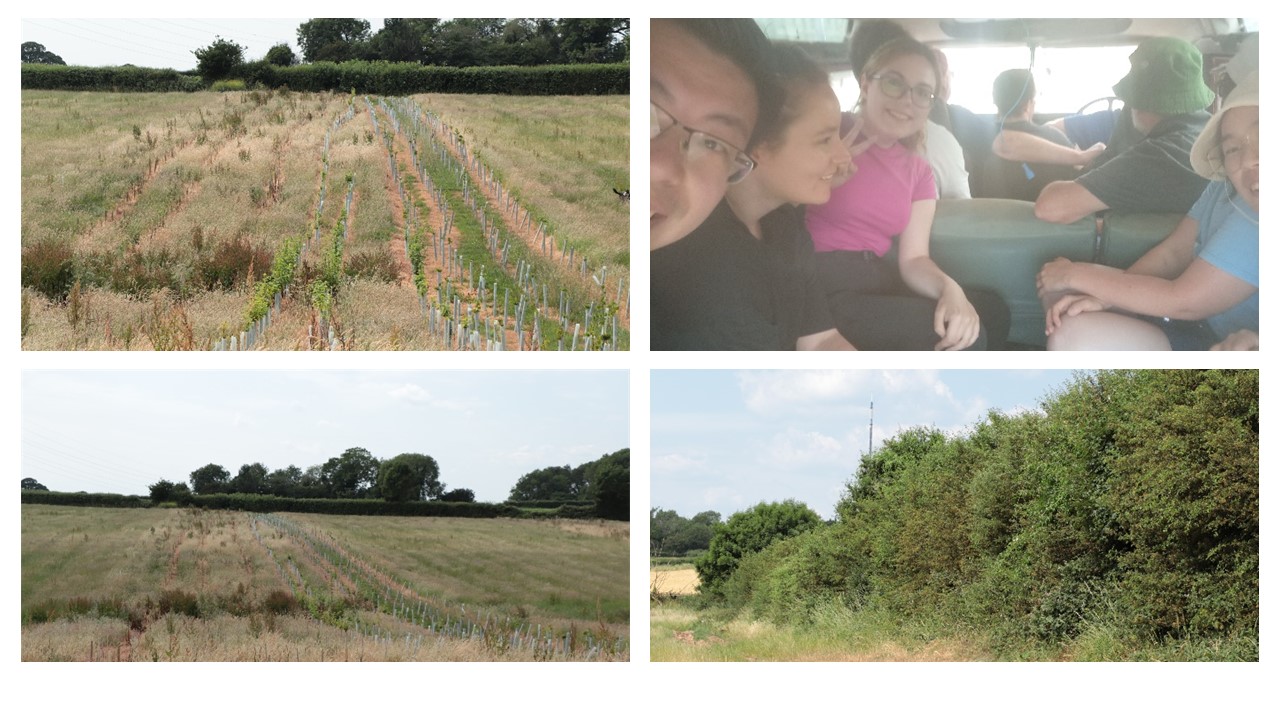
More information
After the workshop, we published an article on IWA: “Why is Wales Missing it’s Tree Planting Targets” available here: https://www.iwa.wales/agenda/2023/07/why-is-wales-missing-its-tree-planting-targets/
Whilst ialeUK remained behind-the-scenes, the excellent BBC Wales news segment on Stump Up for Trees was shown on the 28th June 2023 at 22:40, here (from 23:56 minutes): https://www.bbc.co.uk/programmes/m001nf70
We provided our workshop participants with a resource pack of relevant articles, available here
Later in November our Bunce Lecture and panel discussion will be delving into more detail on Agroforestry.
References
- Forest Research (2023) Provisional Woodland Statistics 2023. Available: https://cdn.forestresearch.gov.uk/2023/06/PWS-statsnotice-15jun23.pdf
- Natural Resources Wales (2023) Benefits to Planting Trees and Creating Woodland. Available: https://naturalresources.wales/guidance-and-advice/environmental-topics/woodlands-and-forests/benefits-to-planting-trees-and-creating-woodland/?lang=en
- Stump Up for Trees website: https://stumpupfortrees.org/about-us/
- The Green Valleys website: http://www.thegreenvalleys.org/about-us/
- Black Mountains College website: https://blackmountainscollege.uk/
- Brynau Farm, Woodland Trust, website: https://www.woodlandtrust.org.uk/visiting-woods/woods/brynau-farm/
- Welsh Government (2022) Sustainable Farming Scheme - outline proposals from 2025: frequently asked questions. Available: https://www.gov.wales/sustainable-farming-scheme-outline-proposals-2025-frequently-asked-questions-html#106216